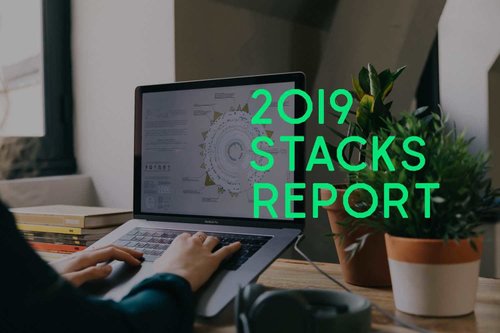Computing’s Gender Divide: Why Tech Is Stuck in the 1980s
14 sept. 2020
10min


Freelance writer
Kathryn Ullrich began her career in tech management in the mid-1980s. After graduating cum laude in electrical engineering from the University of Michigan, she and a friend, a man, were hired at the same company in California. Her role was to manage the daily service people, while he was put on special projects to work on proposals with other managers. Years later, Ullrich worked in strategy consulting and was passed over for a promotion by an underperforming male colleague. She moved on to software marketing, where she was a product manager doing the same amount of work as a general manager.
Throughout the continuous setbacks she experienced, Ullrich learned she shared a similarity with other women engineers: they all had a close family member as their first mentor. Ullrich remembered the conversations she had with her father about applying the theories she had learned in school to the practical work environment. He taught her to identify color codes on resistors by sharing a few songs engineers used as mnemonics.
“You needed to have a role model,” Ullrich says. “At the time, all the role models were men. So it had to be somebody who was close to the family, so we could figure out it’s OK to go into engineering. We had the support of fathers, uncles, and brothers, so it wasn’t foreign to us.” Today, Ullrich is a technology partner at Odgers Berndtson, an executive search firm, where she helps tech companies with diversity recruitment at the VP and C-suite level.
While there has been ongoing support for women in computing in recent years, the percentage of women majoring in computer science in the US peaked at 37% in 1984 before plummeting, according to a 2016 report by the National Center for Women & Information Technology (NCWIT). The report also found that the percentage of women who held computing-based jobs has been in a steady decline since its height at 36% in 1991. And in a 2019 fact sheet, the NCWIT found that only 26% of professional computing occupations in the US that year were held by women.
Since the 1940s, the US has been among the world’s leaders in computing, yet today, the gender disparity between computing professionals in the country remains greater than it was in the 1980s. Through cultural, economic, and policy decisions in the US, that decade seemed to have brought the gender biases of generations past to a peak, shaping a developing industry and casting a shadow over women in computing today.
The 1940s to 1960s: The gendering of early computing roles
Since the industry’s nascent years, societal biases have influenced the designation—and credit—of computing labor between genders. In the 1940s, the US military funded the country’s first programmable digital computer: the Electronic Numerical Integrator and Computer (ENIAC).
The project leaders assigned the prestigious work of hardware engineering to men, while underestimating the technical and analytical rigor that programming the machine would require, according to Jennifer Light’s 1999 study titled When Computers Were Women. Perceiving programming as clerical work, the project leaders recruited six women—Kathleen McNulty, Frances Bilas, Betty Jean Jennings, Betty Holberton, Ruth Lichterman, and Marlyn Wescoff—whose essential contributions were later omitted from press coverage and public demonstrations of ENIAC.
“The role of the War Department and media in shaping public discourse about the machine and its meaning is significant. Several potential opportunities for women operators to get some public attention and credit for their work never materialized,” Light writes.
Through the 1950s to the 1960s, demand for coders increased as companies adopted enterprise software programs. Programmers were hired on aptitude, often taking pattern-recognition tests and being trained on the job, and women accounted for 30-50% of computer programmers, according to research by Claire L. Evans, published in her book Broad Band: The Untold Story of the Women Who Made the Internet.
Computer programming was perceived as similar to secretarial work, but its opportunities for career advancement made it a popular career choice for women at that time. In a 1967 Cosmopolitan article titled The Computer Girls, Lois Mandel wrote that organized and detail-oriented women even had advantages over men in programming. Citing the notable computer scientist Grace Hopper, Mandel says: “You have to plan ahead and schedule everything so it’s ready when you need it. Programming requires patience and the ability to handle detail. Women are ‘naturals’ at computer programming.”
By the mid-1960s, however, programming had begun shifting from being women’s work to that of men. The industry was better at recognizing the complex processes of analysis, planning, testing, and debugging that programming required. At the same time, the limitations of first-generation electronic computers demanded that programmers “cultivate a series of idiosyncratic and highly individual craft techniques,” writes Nathan Ensmenger in his 2008 study Making Programming Masculine. Programming soon “acquired a reputation for being incomprehensible to all but a small set of extremely talented insiders,” he says.
Male programmers worked to raise the profession’s status by forming professional associations that excluded women. They encouraged companies to adopt aptitude tests and personality profiles in their hiring process that were biased towards the math classes that men were more likely to take, as well as to identify a particular obsessive, loner personality type. By the mid-1960s, Ensmenger found, about 80% of companies were using these aptitude tests and personality profiles as their main tool for hiring programmers.
The 1970s: Progress for women in the workplace and the rise of personal computing
The women’s liberation movement of the 1970s fought against the normalized prejudices that had been acceptable up until then in the workplace. Even as women pursued computing in great numbers in the 1950s and 1960s, workplace culture was rife with overt sexism. The researcher William F. Vogel found that demeaning “humorous” articles about women in technology ran in trade journals such as Datamation, which is quoted as saying in 1962, “When she gets a job offer—over a rival who’s a slovenly beatnik and an outright charlatan—she can’t make a decision and goes home to ask her mother about it.”
However, Vogel noted that, by the mid-1970s, portrayals of women in the computing industry had changed to be more supportive and inclusive; there was even a change in editorial direction at Datamation, with letters regularly being run in support of women in the industry. Influenced by equal-opportunity legislation and the women’s movement, three big computer firms—IBM, Control Data, and the Burroughs Corporation—emphasized gender diversity in the workplace.
At IBM, for example, personnel executive Barbara Boyle spent 14 years at the company and developed internal affirmative-action policies. In 1970, she became IBM’s first manager for women’s programs. After this, she created her own consultancy firm to advise other companies on gender-diversity best practices, such as documenting skill-specific qualifications for hiring to minimize managerial bias.
Also, by 1977, the development of the microprocessor allowed personal computers, called microcomputers, to be produced at a low enough cost to be affordable for consumers. Researchers found that the rise of these computers contributed to the decline of women majoring in computing in school. Fathers generally spent more time with their sons than their daughters, and spent more time educating their sons about computing. “At each step from early childhood through college, computing is both actively claimed as ‘guy stuff’ by boys and men and passively ceded by girls and women,” write Jane Margolis and Allan Fisher in their book Unlocking the Clubhouse: Women in Computing. Microcomputers were also marketed mainly to boys and men, and 1980s popular media took hold of the idea that computers were for nerdy boys with movies such as Tron, Weird Science, and WarGames.
It was also found that, before young men and women were exposed to computers in the home, almost all incoming college students had little to no experience of working with them. By the mid-1980s, however, computer science professors started expecting prior programming experience from their students. Patricia Ordóñez, now part of the computer science faculty at the University of Puerto Rico, dropped computer science in college because she did not have experience and lagged behind in her class. “I asked a question and the professor stopped and looked at me and said, ‘You should know that by now,’” Ordóñez told NPR in 2014.
The demand for computer science courses also spiked, outstripping the number of professors who could teach the material. In response, universities began requiring computing knowledge and advanced mathematical prerequisites from their students to be an incoming computer science major—“an effective, if unintended filter to exclude women from CS,” says technology and culture historian Thomas Misa, who edited the book Gender Codes: Why Women Are Leaving Computing.
The change in the way programming was taught at universities likely dissuaded many women from pursuing the field of study. Simultaneously, the percentage of women who enrolled in medical, law, and business schools increased dramatically during this decade, indicating progress in women’s advancement in other demanding and highly skilled professions.
The 1980s: The dramatic decline of the number of women in computer science
While gender-supporting workplace changes, such as the setting-up of the Equal Employment Opportunity Commission (EEOC) in the US to enforce civil rights laws against discrimination, had started being implemented in the mid-1960s, some historians highlight how much of this progress was undone within US technology companies due to changing market pressures and an overarching political resistance to feminism. “Just when women’s quest for equal rights seemed closest to achieving its objectives, the backlash struck it down,” writes Susan Faludi in her 1991 book Backlash: The Undeclared War Against American Women. “Though business leaders say they are aware of and deplore sex discrimination, corporate America has yet to make an honest effort toward eradicating it.”
In the 1980s, many US-based companies underwent severe financial and organizational strains, resulting from the confluence of several economic factors—financial deregulation of the American economy in the 1970s, increased international competition in technology and manufacturing, and the adoption of neoliberalism policy during Ronald Reagan’s presidency that led to corporations prioritizing shareholder value over reinvesting profits internally for workers. As part of these fundamental changes, many US companies “effectively gutted the gender-supporting internal changes prompted by the 1970s women’s movement,” Misa says.
Only the largest corporations, while significantly impacted by the economic shifts in the 1980s, were equipped to retain well-organized HR departments due to their size. This may have allowed them to preserve the gender-balanced hiring practices initiated by the EEOC, according to Misa. While conducting interviews for academic research, he noted how most of the women he spoke with had likely remained employed in middle-tier, corporate positions by working for the largest companies: AT&T, Lockheed Martin, American Airlines, and IBM.
For smaller tech companies and start-ups, researchers have highlighted how the shifting business priorities of the era created an internal culture driven to acquire and maximize venture capital returns. At the start of the 1980s, there were only a few dozen venture capital firms managing about $3 billion in funds; by the end of the decade, analysts estimated that there were more than 650 firms managing $31 billion.
Venture capital investment is a male-dominated industry, and its rise in the 1980s created the model for how venture capital for tech start-ups works today. For decades, the lack of diverse representation within venture capital firms has contributed to the lack of investment made in start-ups with mixed-gender or female founders. In 2019, mixed-gender and female-founded teams raised only about 11.5% of all venture capital investment, an increase from 10.6% in 2018, according to PitchBook, a company that offers private market data.
Anastasia Pash, the founder of the virtual-reality tour company Globetrotter VR, remembers organizing a panel of women technologists at a 2019 conference who all mentioned the difficulties they had faced getting funding for their ventures and projects. “It was an eye-opening experience to see that even some of the most celebrated women in the industry struggle,” she says.
More women are becoming partners in venture capital firms today, likely having a better understanding of products created by or marketed to women, and who may in turn network with more women entrepreneurs and technologists. However, some experts suggest that the historic bias toward male founders for venture capital funding has contributed to an ongoing, pervasive culture that is permissive of sexism.
“High-tech companies, with their ideology of the ‘new economy,’ effectively gutted modern, well-organized HR departments—the sort of stuff that big companies were doing,” Misa says, pointing to the issues that women have had in Silicon Valley with making gender-harassment complaints to their start-ups’ HR departments. “Universities, foundations, government agencies like the National Science Foundation, and professional organizations like the ACM [Association for Computing Machinery] have all been doing sensible things in their control. Tech companies, if they wanted to, could do far more.”
Women in computing today
Compared with established STEM fields, computing is still a relatively new industry that finds itself continuing to be impacted by the societal biases that shaped the industry in the 1980s. In 2012, research funded by the National Science Foundation found that women who left engineering jobs were more likely to quit because of an uncomfortable work environment than for any other reason, including the need to spend more time with children and family.
By 2016, not only was the percentage of women majoring in computer science low, but the attrition rate for women in tech was more than twice as high as it was for men, according to the NCWIT. While progress is being made today throughout the industry to encourage more women and nonbinary people to pursue and advance in computing careers, change remains slow.
According to diversity statistics released by tech companies, from 2014 to 2019, the gender ratio of Google’s tech workforce changed from 83.4% male to 77%. Similarly, both Apple and Microsoft saw only a 3% overall increase in the percentage of women in their technical workforces. Projections from the US Bureau of Labor Statistics estimate that, from 2018 to 2028, industry demand for software engineers will grow by 21%, which is faster than the average for all occupations. Yet, according to NCWIT data, only 20% of computer- and information-science bachelor-degree recipients in 2018 were women.
Transformations are already underway throughout the computing industry to create a future workforce representative of technology’s diverse end users. There has been a growth in organizations dedicated to mentoring diverse students in computer science, with examples including The Grace Hopper Program: Coding Bootcamp and Black Girls Code, as well as professional groups that are supportive of women in tech, such as Women Who Code and Ladies of Code. Tech companies are offering generous parental leave benefits that can help to retain women employees in the US, a country that is among the few nations that does not mandate paid leave for new parents. And according to data published by Harvard Law School’s US Board Diversity Trends in 2019, more women are becoming executive board directors across all sectors, with newer appointees often having a background in technology; they, in turn, can influence businesses’ internal culture as well as future industry opportunities.
For a new generation of technologists, “people must see themselves represented in their desired career fields,” says Rhiannon Little-Surowski, founder of coding boot camp WP Code Camp. Women, she says, must “have models with whom they can identify.”
This article is part of Behind the Code, the media for developers, by developers. Discover more articles and videos by visiting Behind the Code!
Want to contribute? Get published!
Illustration by Victoria Roussel
Follow Welcome to the Jungle on Facebook, LinkedIn, and Instagram, and subscribe to our newsletter to get our latest articles every day!

Inspirez-vous davantage sur : Career hacking
Because being a developer is not just about coding, we want to share dedicated tips on soft skills and career paths, help you stay up-to-date with your favorite technologies, and learn more about the job market.

5 Remote-work Lessons From the Open-source Community
The open-source movement has a few things it can share about remote working with the wider software-development community.
09 juin 2020

2019 Stacks Report
The most-mentioned technologies in the job specifications published on WTTJ's website in 2019 and the average number of applicants per technology.
21 avr. 2020

Engineering Management: An Interview with Saad Rehmani
Saad Rehmani, the VP of Engineering at Reddit, shares his most effective management strategies to handle the COVID-19 crisis.
07 avr. 2020

Engineering Management: An Interview with Rich Archbold
Rich Archbold, the VP of Engineering at Intercom, explains how to develop a management style and how to transition to managing other managers.
17 mars 2020

Kaya Thomas, the iOS Developer Working to Achieve Inclusivity in Tech
Meet Kaya Thomas, the iOS mindfulness developer working to achieve inclusivity in tech through mentorship.
04 mars 2020
La newsletter qui fait le taf
Envie de ne louper aucun de nos articles ? Une fois par semaine, des histoires, des jobs et des conseils dans votre boite mail.

Vous êtes à la recherche d’une nouvelle opportunité ?
Plus de 200 000 candidats ont trouvé un emploi sur Welcome to the Jungle.
Explorer les jobs